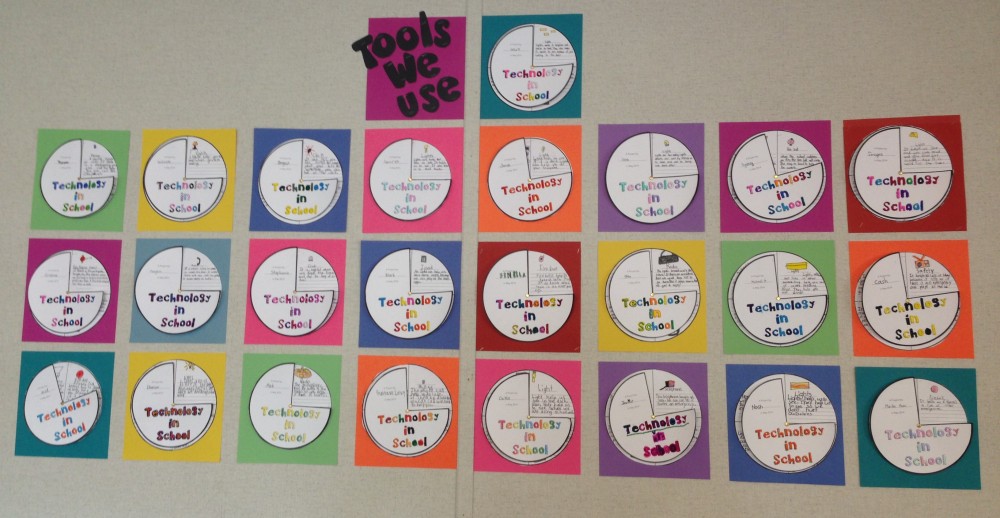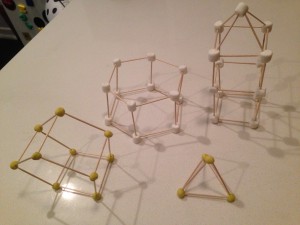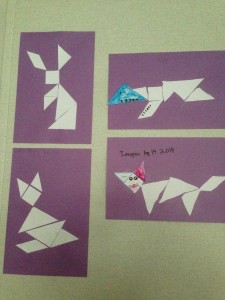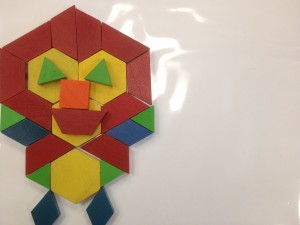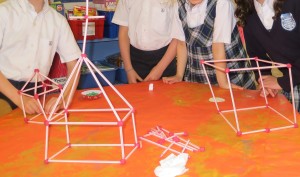In order to equip myself as an educator with broad knowledge and understanding of the elementary subjects, I made use of the exemplary resources from my mentors and colleagues to support and guide my classroom teaching.
During my extended practicum, I used a wide array of tools to show my Grade 2 students in the geometry unit how to think mathematically by asking questions, making connections, visualizing, reasoning and solving problems.
1. INQUIRY-BASED APPROACH
At first, I checked for understanding from students about shapes by asking them to write what they knew on a post-it note. As a class, we put together all the notes on a board and identified questions that led us into the unit.
Because not every student remembered the concepts and terms from last year’s class, they were given some “play time” to engage with shapes and solids hands-on by using tangram pieces, blocks, toothpicks and marshmellow to construct.
As students began to connect mentally with different shapes in their hands, I decided to engage in a multi-modal approach to develop students’ interest into more abstract levels of geometry.
2. PROCESSES AND SCAFFOLDING
The integration of literature, fine arts, music and technology allowed me to bring alive the concepts of geometry to students. In class, they worked on a math dictionary, math rap and play games like ‘Tangram,’ ‘Shapes in the Bag,’ and ‘What Does the Shape Say.’ For outside, they recorded their finding of shapes and solids from the playground equipment and school garden.
Apart from using school textbooks, I gave students real-life math problems and math journals to work in class. The topic of geometry became relevant in our daily lives to communicate with others.
3. COLLABORATION
In the final stage, students employed their understanding of 2-D and 3-D geometric properties for the School Building Innovation Project. Working in groups of 2-4, they were able to identify different 2-D shapes from the buildings that they constructed. They applied the properties of 3-D solids to build different models of school gym, playground and church. It was both challenging and fun.
With the help of my school advisor, I evaluated this unit using a School Building Innovation Project Rubric to assess students’ individual work and their ability to work together in a group setting.
Throughout this unit, students are able to exercise their math knowledge and skills to problem-solve, construct and be creative. The use of language and fine arts, as well as technology, is beneficial for us to explore math in an interactive environment. I implement small lessons to instruct and scaffold students to reach the final stages of evaluating and creating (on the Bloom’s Taxonomy) in the unit-end project. Because math is one of the core subjects at the elementary level, I strive to develop more hands-on materials and creative ways for students to participate and build a strong foundation in this area.
